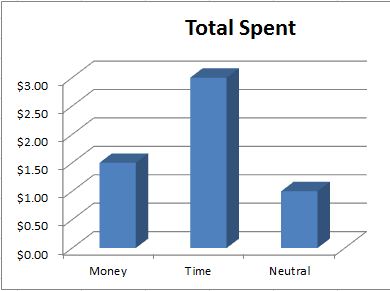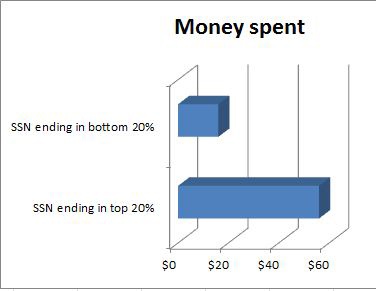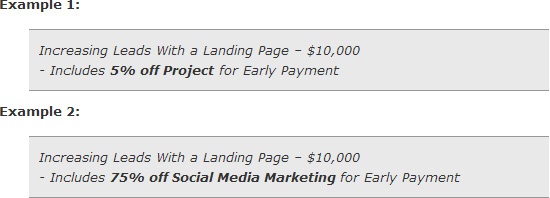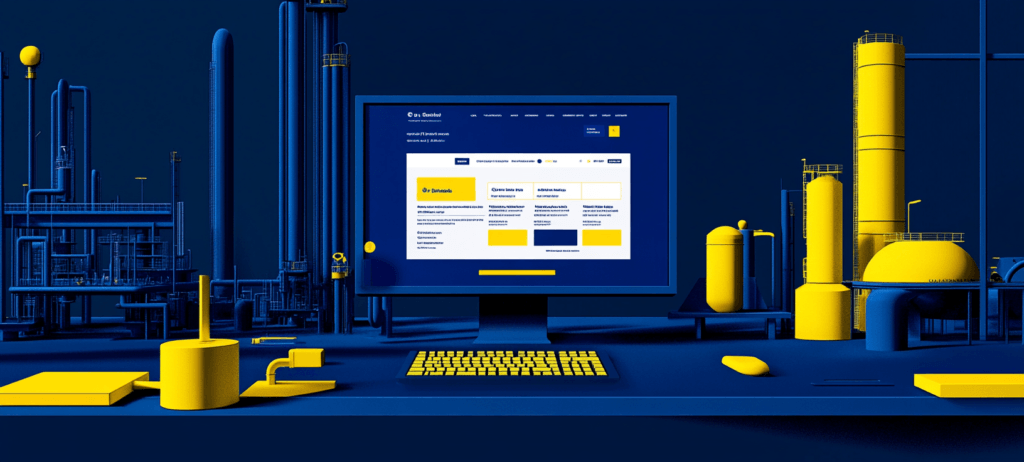- Home
- Blog
- Web Design
- 7 Pricing Strategies Based on Research Studies
7 Pricing Strategies Based on Research Studies
-
 11 min. read
11 min. read
-
 William Craig
William Craig CEO & Co-Founder
CEO & Co-Founder
- President of WebFX. Bill has over 25 years of experience in the Internet marketing industry specializing in SEO, UX, information architecture, marketing automation and more. William’s background in scientific computing and education from Shippensburg and MIT provided the foundation for RevenueCloudFX and other key research and development projects at WebFX.
 For any freelancer, how much to charge clients is one of the hardest things to get right. If you set the price for your services too low, you could be leaving a lot of money on the table and get stuck working with clients that don’t see the true value of your work. When it comes to pricing, most of us are either guessing or copying what others are doing.
For any freelancer, how much to charge clients is one of the hardest things to get right. If you set the price for your services too low, you could be leaving a lot of money on the table and get stuck working with clients that don’t see the true value of your work. When it comes to pricing, most of us are either guessing or copying what others are doing.
Luckily, we can rely on some research studies to help us price our services better by applying the psychological principles derived from the studies that we’ll discuss below. Here are seven pricing tips based on research studies.
1. Emphasize on Time Savings
When it comes to purchasing products or services, the lowest price always wins, right? Not necessarily. A recent study shows that most people value the time or experience over the actual price of an item.
According to Jennifer Aaker, the General Atlantic Professor of Marketing at Stanford Graduate School of Business:
“Because a person’s experience with a product tends to foster feelings of personal connection with it, referring to time typically leads to more favorable attitudes—and to more purchases.”
Aaker and her research partner, Cassie Mogilner, set up two different studies that gauged participants’ reactions (and spending) when they were presented with options of time versus money. Participants had more favorable reactions when asked questions about time or experience. For one of the studies, Aaker and Mogilner set up a lemonade stand (which they called C&D’s) and had their 6-year-old sons sell lemonade in the park.
They used three signs to see if there were any effects on sales:
- Spend a little time and enjoy C&D’s lemonade
- Spend a little money and enjoy C&D’s lemonade
- Enjoy C&D’s lemonade (a neutral sign)
Customers were told that they could pay between $1 and $3 per cup. Now, not only did the sign stressing time attract more customers to the booth, they were also willing to pay almost twice as much as the customers who wandered over when the money-centric sign was up.  What does this mean for freelancers?
What does this mean for freelancers?
When you’re discussing projects with your clients, it’s better to focus on the time aspect of working with you. Perhaps you want to stress that you won’t miss deadlines (especially if you find out that they’ve had this problem in the past), or that they can save a lot of time working with you. When it comes to presenting your services, it’s better to emphasize on timesavings and the experience of the service, rather than its price.
Sources and Further Reading
- Time vs. Money: Analyzing Which One Rules Consumer Choices
- Does Consumer Happiness = Time or Money Spent?
2. Reset the Price Anchors Set by Your Competition
You may have found yourself in a situation where a client comes to you with a price quote they’ve gotten from another freelancer, hoping that your services will have a lower price. You know that the quote from the other freelancer is too low. And even though you’re trying to express that to them with valid reasons, they won’t budge from the price they already have.
This is because they can’t get this original price anchor out of their head. Based on a classroom study by Drazen Prelec, a professor at MIT’s Sloan School of Management, when people have lower price anchors, they tend to want to pay less. The professor asked his students to write down the last two digits of their social security numbers.
Then he showed them a series of items. He passed out paper and had the students write their two digits at the top of the page and next to the individually listed items. After that, the professor asked the students to write down how much they would be willing to pay.
After collecting and analyzing the data, it turned out that the students with the highest-ending social security digits bid more, while the ones with lowest-ending numbers bid less. For example, the top 20% bid an average of $56 for a wireless keyboard while the bottom 20% bid $16.  This is how easy it is to set a price anchor that will influence future buying decisions. So how to do you combat low price anchors set by your competition? You could make your service impossible to compare to others by changing the way you present your solution.
This is how easy it is to set a price anchor that will influence future buying decisions. So how to do you combat low price anchors set by your competition? You could make your service impossible to compare to others by changing the way you present your solution.
For example, instead of offering a generic “website redesign” service, customize the service to the the customer’s needs (e.g., “a website redesign to increase online leads.”) That one small change will make sure that your solution is incomparable and will make it harder for customers to reference the low price anchor.
Sources and Further Reading
- The Fallacy of Supply and Demand
- Choice in Context: Tradeoff Contrast and Extremeness Aversion
3. Minimize the Pain Associated with Spending
Sometimes the way people choose to spend money is bizarre. But psychologically speaking, when we spend money, we are feeling a loss. For example, say you were presented with the option of either getting a guaranteed $80 or an 85% chance of getting $100. Most people are going to choose the $80 because they don’t want to risk the loss of $80. On the other hand, if you had to take a guaranteed $80 loss or had an 85% chance of losing $100, most people would pick the second choice. It’s riskier, but they would rather take the gamble because there’s a small chance they won’t lose anything. Why?
Because when we lose money, we are experiencing real pain. In a joint study from Carnegie Mellon, Stanford, and MIT, it was shown via fMRI scans (which measures brain activity) that thinking about losing money by making a purchase registered as real pain in the brain.  Image source: Carnegie Mellon University If you present the pricing on your services invoice-style with every single service as a line item, you’re making your clients analyze every single service.
Image source: Carnegie Mellon University If you present the pricing on your services invoice-style with every single service as a line item, you’re making your clients analyze every single service.
This causes them pain with each and every “loss.” Instead, bundle your fees into one inclusive solution with one simple price tag. Your clients will get to see the entire picture of your services, and they will only have to deal with the pain of paying once.
Sources and Further Reading
4. Use Weber’s Law When Raising Prices
When it’s time to raise your prices for existing clients, you should stay away from one large price increase and instead raise your prices in small increments over a period of time. That’s because of something called Weber’s Law. According to Weber’s Law, consumers don’t register a price increase until it’s highly significant.
When it comes to raising the price on products and services without raising a red flag with your clients, the magic percentage is under 10%. This is why companies like Starbucks only raise the price of their drinks a few cents at a time. Obviously, if you quote an hourly rate you’ll want to let regular clients know your rate is going up.
Do this by sending them an email letting them know that, to keep up with demand while still delivering high quality work, you’ll be raising prices by a specific date. You’ll be surprised how well these types of increases go as long as you’re following Weber’s Law by making several small increases instead of one single, large increase over the same period of time.
Sources and Further Reading
- Definition of Weber’s Law
- Weber’s Law and Why Big Business Believes You Won’t Notice a Price Increase Under 10%
5. Create the Right Context for Charging More
We all have our preferences, but at the end of the day, Dunkin’ Donuts and Starbucks both sell coffee. So why is it that Starbucks gets away with charging more for their drinks? They give their brand a different context — a context of luxury.
This is seen in a study by Richard Thaler. The scenario: You and your buddies are hanging out on a hot beach and decide that you really want a cold beer to cool off. So your friend can either go to the run-down grocery store or the nearby resort hotel.
Thaler found that people are willing to pay more for the beer from the hotel. In fact, they think that it’s unfair to be charged the same price at the grocery store as they would pay at the hotel. Think about that for a second.
The beer is the same no matter where you buy it, but the fact that it’s coming from a resort hotel gives it more value. For freelancers, this means that the details matter. Create an experience for your clients that tells them you provide a higher value service than your competitors.
Be the Starbucks, not the Dunkin’ Donuts. Invest time and resources in building beautiful looking contact forms, a website, cost estimate forms, and proposals that will help you set the context for what you’ll be able to charge.
Sources and Further Reading
- Exuberance Is Rational
6. Show Gains and Losses the Right Way
Need to incentivize a client with a discount? Then make sure you’re discounting the right way. Customers place a lot of weight on percentages of their discounts.
For example, let’s say that you’re about to buy a t-shirt for $20. But the salesperson informs you that the exact same shirt is on sale for $15 at another branch located 20 minutes away. Would you make the trip to the other store? Compare that to if you were going to buy a pair of designer shoes for $200. When you get to the checkout counter, you’re told that 20 minutes away there’s a store selling those shoes for $195. Would you make the trip then? According to another study by Thaler, when presented with those scenarios, most people would choose to travel to save $5 on the shirt but not on the $200 shoes. So even though they’ll be saving the exact same amount of money, people are more likely to act when the percentage is larger (25% versus only 2.5% in the example scenarios above).
For freelancers, this means you should give discounts in large percentages by discounting the things that cost a small amount.  Let’s say that you’re working on a project with landing pages and social media marketing services that costs a total of $10,000. Instead of offering 5% off the entire cost, offer them 75% off the bundled social media marketing service. Both of these discounts save the client $500, but they’ll be more likely to take action by seeing the huge percentage of savings.
Let’s say that you’re working on a project with landing pages and social media marketing services that costs a total of $10,000. Instead of offering 5% off the entire cost, offer them 75% off the bundled social media marketing service. Both of these discounts save the client $500, but they’ll be more likely to take action by seeing the huge percentage of savings.
Sources and Further Reading
- Mental Accounting Matters
7. Small Words Matter
Can one tiny word make the difference between winning and losing your client? According to a study from Carnegie Mellon University, absolutely yes! Professors Scott Rick and George Loewenstein decided to test the copy used when describing the fee associated with joining a usually free DVD trial offer.
They tested these two phrases:
- a $5 fee
- a small $5 fee
By adding the word “small” to the copy, they saw response rates improve by 20%! Yes, a 20% improvement because they added the word “small.” When crafting your own proposals and estimates, pay close attention to phrasing. Consider using words like “small”, “minor”, “low”, etc.
They do — as shown in the study by Rick and Loewenstein above — make a difference.
Summary
Okay, now that I’ve thrown a lot of studies at you, let’s do a quick recap:
- Craft your proposals so they emphasize the time your clients will save or the experience they will get from your service
- Make your solutions incomparable to your competition by showing how you’ll solve your clients’ problems
- Bundle your services into one all-inclusive price to cut down on the perceived “pain” your clients feel when spending money
- Opt for more frequent price increases instead of one large price increase
- Ensure that your website, proposals, and contact forms are designed well so that your clients feel like they’re buying from a high-end company
- Give larger percent discounts by discounting smaller amounts
- Include words like “small” or “low” in your copy to enhance response rates
Related Content
-
 President of WebFX. Bill has over 25 years of experience in the Internet marketing industry specializing in SEO, UX, information architecture, marketing automation and more. William’s background in scientific computing and education from Shippensburg and MIT provided the foundation for RevenueCloudFX and other key research and development projects at WebFX.
President of WebFX. Bill has over 25 years of experience in the Internet marketing industry specializing in SEO, UX, information architecture, marketing automation and more. William’s background in scientific computing and education from Shippensburg and MIT provided the foundation for RevenueCloudFX and other key research and development projects at WebFX. -

WebFX is a full-service marketing agency with 1,100+ client reviews and a 4.9-star rating on Clutch! Find out how our expert team and revenue-accelerating tech can drive results for you! Learn more
Make estimating web design costs easy
Website design costs can be tricky to nail down. Get an instant estimate for a custom web design with our free website design cost calculator!
Try Our Free Web Design Cost Calculator


Web Design Calculator
Use our free tool to get a free, instant quote in under 60 seconds.
View Web Design Calculator
Proven Marketing Strategies
Make estimating web design costs easy
Website design costs can be tricky to nail down. Get an instant estimate for a custom web design with our free website design cost calculator!
Try Our Free Web Design Cost Calculator
What to read next




